8 Ways to Reduce Budgets with Effective Maintenance Planning
June 29, 2021Without effective maintenance planning, operational costs cannot be well managednor reduced. Just cutting budgets, year after year, will result in lessplannedpreventive work and therefore more reactive and breakdown workleading to higher expenses.
In this article, we’ll explore how and why to invest in improving SAP maintenance planning and schedulingto reduce resources,reduce downtime,gain better control on spending, and optimizeyour budgets.
>
>Index
Key Budget Challenges without Effective Maintenance Planning
1. Pursue Asset-based Budgeting
3. Improve Data Capture for Analysis
4. Change Reactive Mindsets
5. Improve use of SAP EAM system
6. Invest in Predictive Technologies
7. Improve Technology for the Workforce
8. Establish and Track Leading Indicators
Key Budget Challenges without Effective Maintenance Planning
“When looking at maintenance costs, the most important concept that you must remember is that your organization’sbehaviors change the resulting cost numbers. Forcing the cost numbers will not change behavior,”writesSam McNair of Life Cycle Engineering.
It seemsobvious butrecognizing that behaviors(seeboxbelow)drive costs is a tenet that not all maintenance organizationsput into practice and operationalize at the highest levels.
Behaviors That Impact Maintenance Costs
Sam McNair of Life Cycle Engineering |
The RealCostImpact ofaReactiveCulture
According to theMarshall Institute,A Measured approach to Uptime,”It is widely accepted in the maintenance industry that a well-planned Work Order is about 3 times less expensive than the same unplanned reactive Work Order, and that Emergency repairs may cost as much as 5 to 7 times more than planned work, which can obviously have a huge impact on the bottom line”.
When you considerthe amount of time it takes torespond to a call, troubleshoot the problem, obtain the spare parts, and then the impact from loss of production, it is not hard to see that shifting the culture from reactive to planned maintenance can have a big impact on your maintenance budgets(and the control of your maintenance budgets).
How much of an impact?According toRichard Lamb, P.E., CPA, President of Cost Control Systems,“Based on ourexperience, the ability to budget and control maintenance cost can increase income by 10 to 30 percent during strong business cycles, and over 100 percent during weak cycles. It may be the difference between profit and loss in the worst business cycles…Industry benchmarking has found that total maintenance cost can be reduced by 10 to 35 percent.”As you can see, with effective maintenance planning, you canmakea materialimpact toyourbusiness.
FoundationsforImprovement
The maintenance budgetis generallya large block of money that is broken down into major cost areas: labor,materials, contract services, and other related expenses.This structure lacks the definition to truly createbudgetforecasts.Budgeting needs to be done at a more granular levelwith the recognitionthat maintenance isacomplexand variablefunction.Toget started, you must build a foundation on which to understandthe cost drivers and levers tobe able to control and reduce spending.
>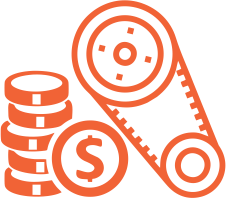 1. Pursue Asset-based Budgeting
1. Pursue Asset-based Budgeting
Most maintenance costs recurannuallybut vary by asset. Therefore,the development ofthe maintenance budget should be done on an asset basis (or a group of similar assets).By looking at the history of repairs by asset, you can more accurately predict the future coststo maintainand repair the asset. Quickly you will be able to see the “bad actors”andin turn,createfocusforyour improvement efforts.
Creating budgets at this level will make it easier to forecast and justify maintenance spending.When push-back on a budget item occurs,havingthe ability to drill down to the details will encourage a collaborative, risk-based decision, so that there will be fewer surprises and less finger-pointing when a breakdowndoesoccur.
> 2. StandardizeProcesses
2. StandardizeProcesses
Having standard, well-documentedprocedures for identifying, planning, scheduling, and executing work iscertainly a basis fordriving greaterconsistency inmaintenance spending.Work approval isalsonecessaryto control spendingplusadvancing work planning and schedulingprocessescanbringfurthervalue.
According to Doc Palmer’s Maintenance Planning and Scheduling Handbook, “Implementing proper planning and scheduling can improve productive maintenance time of a typical organizationfrom 25-35% to 50-55% – almost doubling the ability to get work completed” – which means more planned work gets accomplished resulting in greater asset reliability and reduction of unplanned maintenancecosts.
>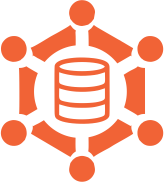 3. ImproveDataCaptureforAnalysis
3. ImproveDataCaptureforAnalysis
Although the data needed for asset-basedcost planning is available inyour SAP system, generally it is not of good enough qualityto supportthe insights needed for cost management.Identifying waste, inefficiencies,and the cause of unreliability, and finding ways to prevent or control those cost items over time, makes it possible to improve overall execution andreduce costs.
RobertPeffenfrom ManagementResources Group, summarized this point as, “One of the most effective ways to control the maintenance budget is to identify and eliminate recurring reliability and maintenance problems. To accomplish this, the data on maintenance work performed must be collected and analyzed. The identified “bad actors” should be ranked according to the severity of impact to the business. Root Cause Analysis should then be applied to eliminate the causes of failures.”
With data capture comes the ability to pursue more advanced maintenance strategies such asReliability Centered Maintenance.WithRCM, the focus is on keeping machinery and assets up and running at maximum capacity while minimizing maintenance costs.Itis accomplished by defining themaintenance approach (preventive, predictive, run-to-failure) by asset.
>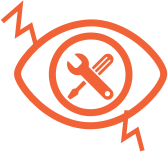 4. Change Reactive Mindsets
4. Change Reactive Mindsets
The maintenance manager alone cannotsucceed in controlling maintenance costs without the support and collaboration of the whole operations team.Rafael Padilha, Director for Reliabilityand Continuous Improvement at Ingrediondescribed the cultural challenge well. In thiswebinar, he describes that“when you don’t have areliability culture, itis difficult to convince the plant manager, the operations directorand othersto stop production for preventive maintenance but you have to dothisor you will never achieve reliability.”He goes on to explain how hesuccessfullyturned around reactive maintenance organizationsand achieved significantcost reductions as a result.
Key Actionsto Get Started
>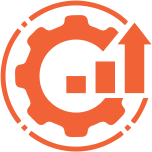 5. Improve use of SAP EAM system
5. Improve use of SAP EAM system
Evidence demonstrates that best practice planning and scheduling is key to improving maintenance staff productivity, increasing equipment uptime, and reducing costs.But SAPPM isn’t that easy to work withas noted by a major analystin their2020 survey of ERP EAM FunctionalSatisfaction, the top functions related to maintenance management that have thebiggestgapin customer satisfactionincluded:
- >Workforce Data for Scheduling– The capability of tracking workforce availability, qualifications, and skills for assignment to specific maintenance jobs
- >Work Scheduling– Automating the assignment of tasks to resources over a period oftime
Companies that useSAPcan benefit significantly from a specialist software tool that provides an intuitive interface to SAP data and automatesmany of the routine steps ofplanning and scheduling.The result can be significant as noted by Doc Palmer,“Work coordination from planning increases wrench time from the 35 percent of a typical good maintenance force to as much as 55 percent. Fifty-five percent divided by 35 percent yields a 1.57 improvement. This means 30 people with planned and scheduled work could perform the work of 47 people. Investing in a single planner creates a 17 person increase to the workforce!”
>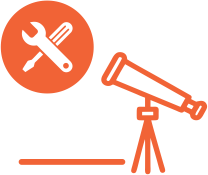 6. Invest in Predictive Technologies
6. Invest in Predictive Technologies
Tosave time and money in preventive maintenance,invest in thetechnologies totrigger a preventive maintenance taskto replacepre-set schedules.Predicting achange in assetcondition such as rising temperatures, increased vibration,or noise, canallow for fewer preventive maintenance tasksbeing conductedannually. Sensors and other Industrial Internet of Things (IIoT) devicesprovide such data along with embedded smart technologies in many of today’s production systems.
>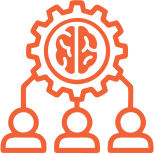 7. Improve Technology for the Workforce
7. Improve Technology for the Workforce
Keep data digital throughout work processes supports data capture and process consistency. For technicians, replacing paperwork orders with mobile devices has been proven to increase wrench timeresulting in more work completed by fewer technicians.Additionalcost-saving benefits typicallyincludea 90% reduction in the time to dispatch orders, 70% reduction in the time to capture field notes, and 100% reduction in printing costs.
Ambev, a subsidiary of ABInBev, the largest brewery in the world, saved over 7.2 million sheets of paper per year ($360,000) by replacing paperwork orders with mobile devices! In addition, they reduced their MTTR (Mean Time to Repair) by 79% – from 24 to 5 days, reduced downtime, increased production, and increased the productivity of their technicians and workers by 15%.
> 8. Establish and Track Leading Indicators
8. Establish and Track Leading Indicators
As you invest in technology and tools to save money in maintenance costs, it is important to be able to objectively demonstrate the results in terms of key performance metrics. These metrics are also important for the ongoing optimization of maintenance activities. According to Robert Peffen, the following performance measures are a good basis to start driving improvements:
- >Total Work Backlog– in Man-hours – This is a measure of all of the work in the maintenance system that has to be executed
- Planned Work Backlog– in Man-hours – This is a measure of all of the work in the system that has been planned for execution
- Percent Planned Work– This is the ratio of planned work versus unplanned work that is performed within a period of time
- Percent Scheduled Work– This is the measure of the quantity of planned work that is placed on a schedule for execution
- >Percent Weekly Schedule Complete – This is a measure of the quantity of work that is scheduled versus what is actually completed within a designated time period. Measuring schedule compliance.
- >Percent PN and PdM – This is a measure of the quantity of predictive and preventive maintenance performed versus the total quantity of work in a scheduled period. More on improving maintenance effectiveness ratios.
Conclusion
It is impossible to cut maintenance spendingand achieve reliable equipment performanceat the same time without effective maintenance planning.Although it may seem challenging, making progresswiththeseproven methods and tools can bejust the beginning of a path towards effective maintenance planning,improving maintenance ratios,andcontinual improvement inmaintenance budgets.
>Build yourBusinessCase
Spending proposals that significantly reduce the largest sectors ofyour organization’sbudgetusually are the most appealing to management.So, start to build your business case with our whitepaper,“Unleash the Power of SAP and Save”.In this paper, you canfurtherexplore thesavingsimpactofplanning and scheduling softwarefor asset-intensive industries.The paper alsoreviewshow to measure your current statusandcalculate yourownpotential savings.
{{cta(‘c067a67a-e8b8-479a-b174-481bb6559f37′,’justifycenter’)}}
How Sigga Can Help
HereatSigga, wehavebeen helpingasset-intensive industrieswithSAP to drivedigital transformation and mobile initiativesinindustrial maintenancefor 20 years.Consider theSigga Planning & Schedulingsolution, it is the most complete and flexible automation solution for SAP PM. The solution replaces routine process steps to check capacities,create schedules and track results.In addition, the solutioncloses the gaps in SAP PM functionalitywith features liketheability tomaintain details on technician skills and availabilities.
TheSiggaMobile EAMsolutionis the leading mobile maintenancesoftwareforSAPenvironments.Companies likeAmbev,Ingredion,Danone, SaintGobain,Unilever and morehavegone mobile and significantlyincreased operational efficiencies andreducedtheirmaintenance budgets.
For end-to-end integrated experiences, wealsooffer aMobile Warehouse and Inventorysolutionto furtherstreamline processesand drive efficiencies.
At Sigga, it is our mission toempower companies to achieve their mobile digital transformation goals by providing best-in-class software technology.
>Readmoreabout SiggaSolutions>and how we can help you optimize>budgets with effective maintenance planning.
